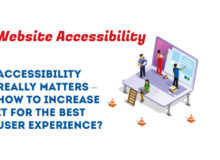Hosting your own business website is like recreating your business structure, all over. Even though it is quite similar- the way people visit a physical store and buy products, and how people interact with a website to do the same; still you need to pay attention to some intricate detailing, for making the most revenue out of your website.
Velarudh has always given priority to UI (User Interface) and UX (User Experience) designing standards. Our very own in-house UI/UX team is made up of individuals having experience in interactive Content Creation, SEO friendly web designs, advanced UX plotting, and attractive UI designs.
Our programmers are also well versed in choosing the right Web App framework, to deliver the most astounding web apps for businesses.
This post is coming straight from our own UX team. Go through this information; so you can build that dream business website of yours, which will have the potential to increase conversion rates.
With the best UX design practices, your business will surely see increased lead conversions and click throughs.
Here are some better UX design tips to follow:
Prioritising Website localisation:
We don’t get to here much about this very important section. Only a few number of good businesses do actually use the word ‘localisation’, while building their business websites or web apps.
Localisation is a vast concept. However, a spun-off concise meaning of the word means providing your readers a website in their own local language.
Yet the word, in itself, can include anything from exploring lingua-franca, to practicing local rules and norms for your business, and literally anything that passes as a generic constituent of a region.
The best UX design practice should be circulating around giving the visitors the freedom to explore your website, in their local language and mindset.
Suppose you plan to sell some of your services and products in South America and India. Then you have to give these countries’ visitors a chance to explore your business in their languages- especially Spanish, Portuguese, and Hindi.
English is definitely the lingua-franca of the world. But, providing people with a website in their mother-tongue is a big bonus.
On top of building language preferences, for your website, you should also be diversifying on local culture, mindset, and user personas.
Here’s how to do website localisation:
- You can install the website translator plugins or hire translators:
There are plugins available from several companies, and third party software services that let you translate your website into multiple languages.
If these plugins are doing the job of correctly translating your website, then it’s okay. But, if you feel that your content is too huge and complex to be auto-translated, or if the plug-ins don’t contain all your preferred language; then you need to make use of translators.
- Have a tight local delivery or service tracking:
Every website introduces the visitors to a business. If your business is involving delivery and shipment of products, or selling intellectual services; then your UX design should impose a local map of the area with real-time delivery tracking, on your website.
Better even, if you can create an Android/iOS application for your business; and enable the whole local tracking and mapping, for your customers, on it.
- Sell products and services based on local habits and personas:
Every region has its own culture; which influences the buying persona and habits of the region-specific visitors, coming to your website.
When selling products, your website should take a note of upcoming festivals, buying surges, holiday lists, and product preferences of the localites.
- Have in-house representatives, fluent in the local languages:
Quite necessarily, you should also be having representatives who can speak the local language of the region, where your business is getting established.
This helps in the ease of communication with your clients, when they are sending grievances or want any type of service/product support.
Motion-Graphics, Media, and Content- enrich it, interlink it:
You should aim for increasing the on-stay time of your visitors. Until and unless, the visitors spend enough time on your website, you can’t increase the conversion rate of your website.
The visitors must have enough reason to rely on your services, and must spend enough time in navigating your website.
Only after they have got themselves completely immersed, in your website, will a majority of them start to covert into leads and clients.
Your website needs to display graphic enriched media content, along with highly on-page optimised written content.
The motto is to first increase the engagement and interaction rate of your visitors.
Impressions are very important, when you want to build an online presence of your business. And you can only leave behind impressions with good content and visual designing.
Here’s what to consider, when doing UX designs, for media and content:
- Having too many service/product pages is still not a bad idea:
Webpages intensify your website’s gravity.
Nowadays, most of the business websites are built on single page web app framework. But still, nothing can beat the fact that more web pages mean more content.
And more content means, more room to experiment with SEO and user engagements.
Storming your web pages, with content, is like furnishing the rooms of your house. Better furnishing leads to better audience retainment; which finally leads to better conversion rates.
To keep in mind, your webpages must have SEO based contents. They should also be relevant and must be interlinked with other pages of your website.
For example, when it comes to the blog section, you should be at least putting one interlink per blog.
- Believe in the power of videos and images:
Written and text content is good, up to a certain extent. The reason is, most of the people don’t love to spend time reading too much of web content.
You might be having dedicated web pages for each of your services/products, or an enormous blog section full of encyclopaedic knowledge – which is no doubt good for increasing the domain authority and relevancy of your website; but your visitors need to interact.
It is very hard to make people read and engage with a written piece of text. So, what you can do is, you can fill up your website with product description videos, service tutorials, infographics, clips, and images.
Having visual graphics content is the best UX design practice to learn. Therefore, it won’t be much wrong to say that you can actually fill up your website with wonderful videos, images, and motion graphics.
- But spare the white; it’s for the good:
Filling up the website with high quality content, doesn’t mean over-populating the webpages.
Let me share with you a very interesting fact.
People like to play with websites. They, for no good reason, will hover around the screen with their mouse cursors. They will drag images and release them, only to see the trail stretch.
They can even click on drop-down menus, multiple times, only because they love the feel of the graphics.
This is the highest creativity a web UX Designer has to offer! User Experience is about making a user feel happy.
When users start loving to roam around your website, just like that, then your UX design is successful.
With respect to the above stated fact, ‘white space’ increases the contrast of visible elements. In painting a landscape; the more skyline or white space you leave, the better is the image. This is an accepted truth.
And, building your website is nothing less than creating your Magnum Opus.
By leaving ample white or light blank space, you will be giving the users a roam-free website environment.
It looks good!
Create a Forum, and a helpline:
A big part of UX designing, for increasing conversion rates of your website, is to have your own Forum.
It helps in bringing several users together, and make them participate in trending threads, related to your business.
With a well equipped Forum, you can expect a higher engagement rate.
Also, don’t forget to have a helpline and a 24/7 online support room, embedded within the website.
Even if someone doesn’t intend to buy your products or services, they can still drop their queries. These interactions will help in growing your fan base, which will in turn increase the lead conversion rates later on.
FAQs about UX design practices:
- Is UI and UX same?
UI and UX go hand in hand.
User Experience is the logical reasoning, which explains the functionality of the website. However, UI or User Interface is about building the elements and templates, as described in the UX blueprint or the website wireframe.
In a simple one line explanation; UX is how the website feels, and UI is how the website looks.
- Is programming necessary for a better UX design?
UX designers need not have to learn web app development frameworks, and/or programming languages.
But the best UX design practices do encourage the UX experts to learn at least HTML, and JavaScript for a better understanding of website development process.
- How to make the website ‘market ready’?
Priority must be given to off-page authority building.
Every UX designer need to give importance to Social Media Optimisation, so that the linking structure between the website and its respective social handles are well woven.
The website, on the other hand, must also satisfy the user intents generated from the website’s social media profiles.
- Should the website host advertisements?
If you are designing the UX of an E-commerce website, or a promotional website; then you can completely become the part of a Search Engine’s display network, and run ads on your website.
However, running advertisements on a website can increase the bounce rate significantly!
The End Note:
That’s all our UX team had to sum up the better UX design tips for better website conversion rates.
Do drop down your comments; and feel free to reach out to Velarudh’s support portal, by sending us a mail, with your queries.
Cheers! Have a good day!






